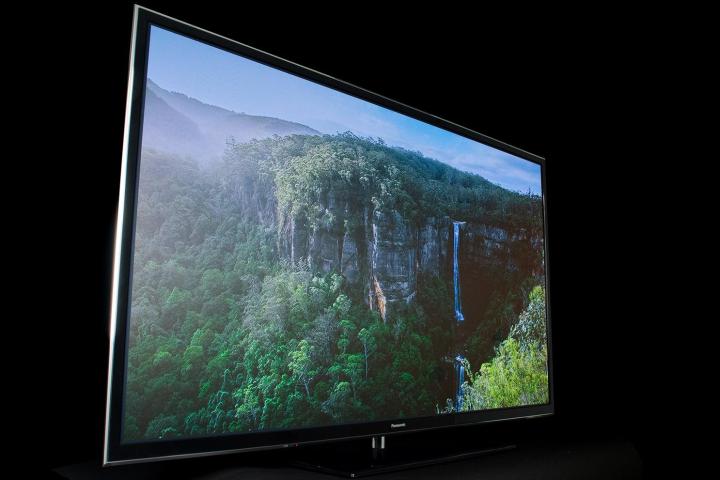
If you’ve been considering a TV purchase for this holiday season, then drop what you’re doing, head to your favorite online or brick-and-mortar electronics retailer and scoop up one of Panasonic’s outstanding plasma televisions right now. Why the rush? Because Panasonic won’t be making plasma TVs anymore; and unless Samsung decides to carry the torch (which, sadly, is doubtful), videophiles everywhere are going to have nothing to buy until OLED becomes affordable.
The rumors have been swirling around for months now. Even as we heaped praise on Panasonic after our first glimpses of its VT60 and ZT60 series plasma televisions earlier this year, we wondered if this year’s units might collectively represent the company’s swan song for plasma. Now, according to a report by Reuters, it is official: Panasonic will stop selling plasma televisions by March 2014 – that’s if supplies even last that long.
In our recently published review, we said Panasonic’s ST60 series plasma televisions are the best deal in TV…ever, but had we known the model might soon disappear from store shelves, we might have issued a stronger call to action, much as we’re doing now.
This year, Panasonic and Samsung both issued plasma televisions that rivaled the vaunted Pioneer Kuro. For years the industry awaited the arrival of a “Kuro-killer,” and when we saw Samsung’s F8500 plasma, it seemed clear 2013 would be the year we saw not one Kuro-killer, but three. When the VT60 and ZT60 arrived at our offices, our suspicions were confirmed.
But it was the lower-priced ST60 that shocked us most. Here we had a TV that offered the sort of performance only seen from top-tier models in years prior, but at unprecedentedly low prices. Today, a 60-inch Panasonic P60ST60 television can be had for $1500 from authorized retailers online.
Part of what makes plasma superior to LED LCD televisions is its ability to produce exceptionally dark black levels paired with recent improvements in brightness capabilities. The result is outstanding contrast that can not be matched by LED LCD TVs. Then there’s a lack of motion blur and superior screen uniformity. Only OLED can best plasma when it comes to picture quality, and OLED is still far from affordable.
Affordability is also one of plasma’s admirable attributes. For years now, plasma has come in considerably less expensive that comparably-sized and featured LED LCD TVs. And perhaps that’s the problem. With unhealthy margins and something of a public relations problem, its probably fair to say that plasma has been doomed for some time.
So what are videophiles to do until OLED – the only technology that can compete with plasma – becomes affordable? It may be that we’ll just have to wait things out. And there’s no better way to do that than with a fresh, new plasma TV.
Panasonic has stated that plasma research and development efforts will likely be diverted to OLED. One can only hope that will mean that healthy competition among Panasonic, Sony, LG and Samsung will help scale production of OLED up while driving costs down.



